Archaeologists released haunting images Wednesday of the skeletal remains of a man who was buried by the eruption of Mount Vesuvius about 2,000 years ago.
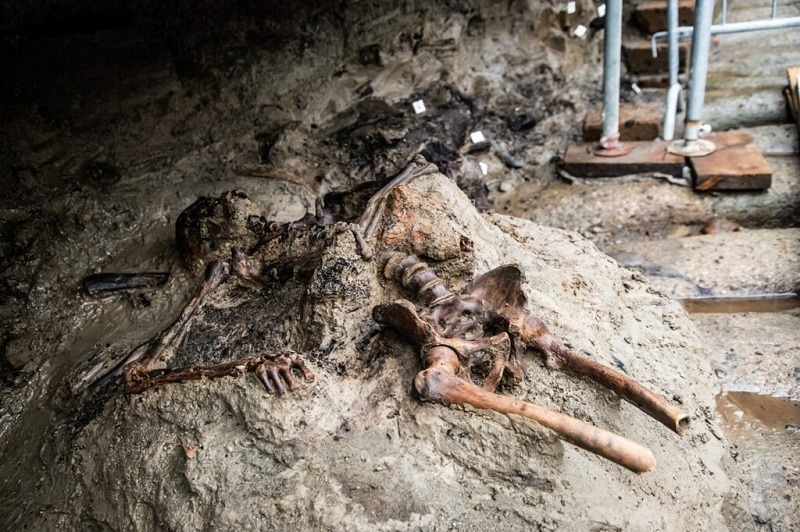
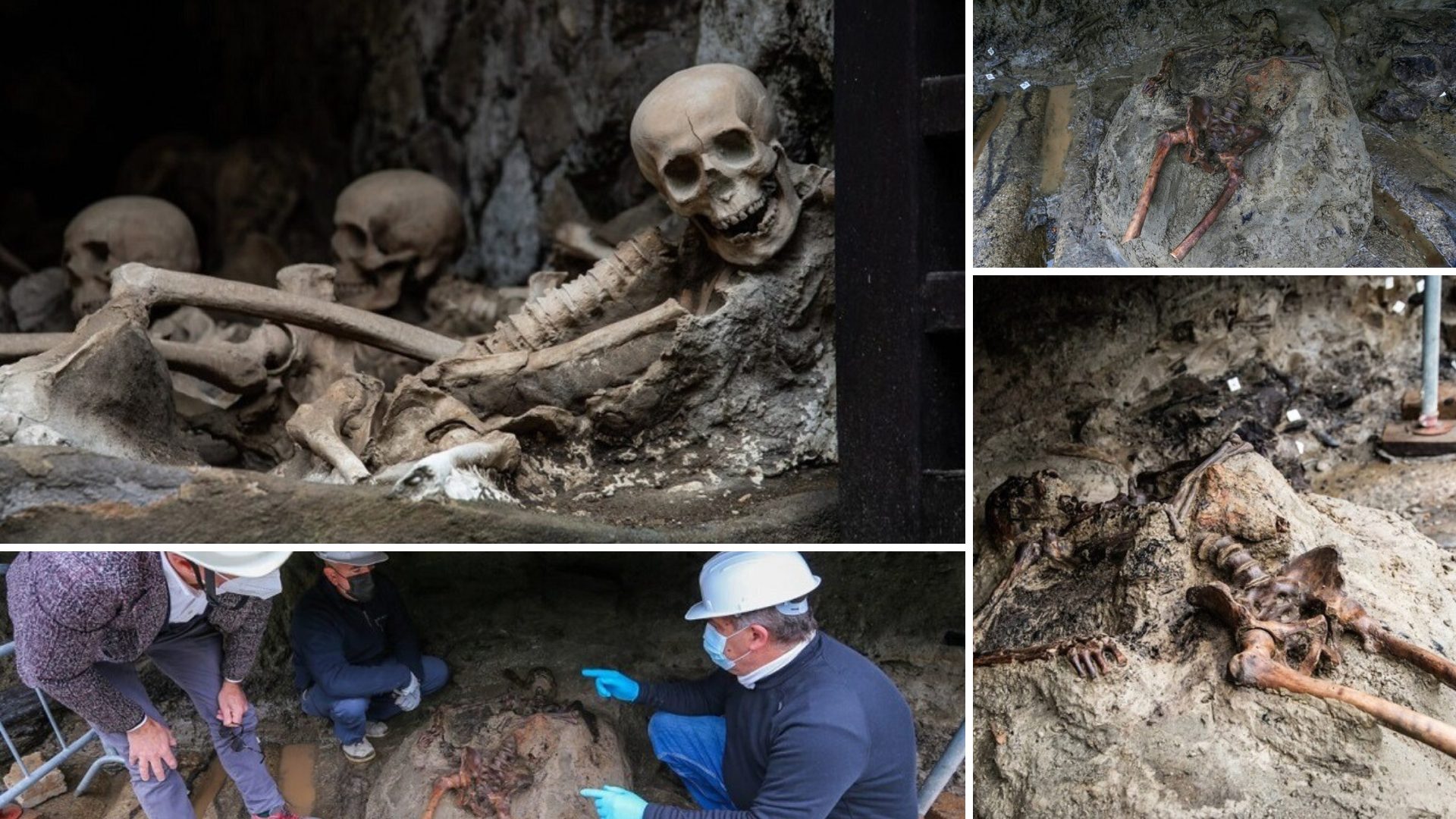
These remains give archaeologists insight into the final moments of Herculaneum but also its prior history.
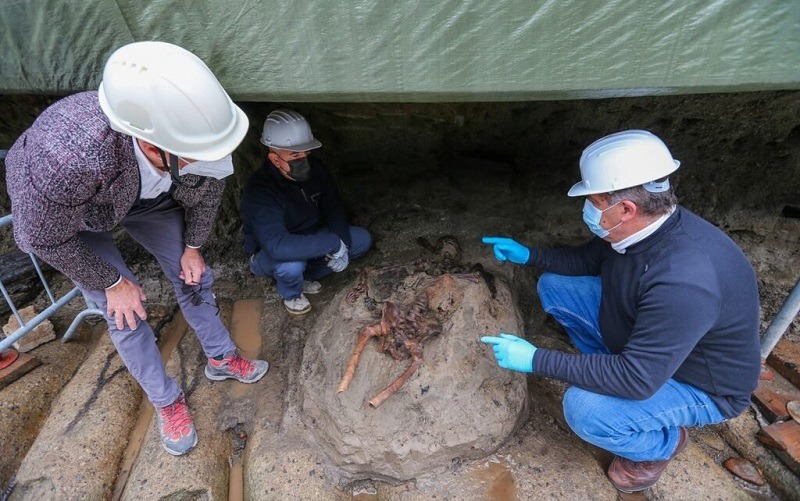
Archaeologists say that the skeleton was red because it was stained by the man’s blood.
The man, discovered in October and believed to be between 40 and 45 years old, was obliterated just steps away from the sea in the ancient Roman town of Herculaneum, near Pompeii, as he tried to flee the cataclysmic eruption.
His remains were discovered on what would have been the town’s beach with the head pointing back in the direction of the sea.
The skeleton was surrounded by carbonized wood, including a roof beam that might have crushed his skull. Preliminary work has found traces of fabric and what appears to be a bag, NBC News reported.
The tragic man’s bones were bright red, which Francesco Sirano, director of the Herculaneum Archaeological Park, told the Italian news agency ANSA was “the mark of the stains left by the victim’s blood,” the Guardian reported.
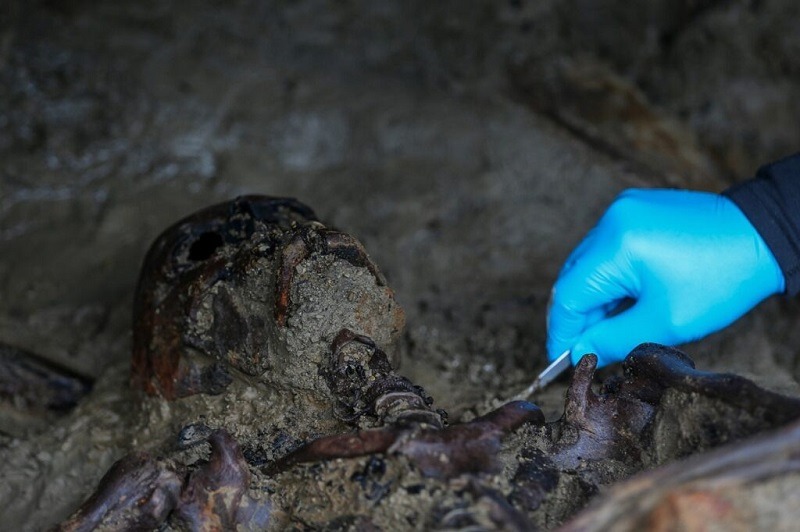
The skeleton was discovered in Herculaneum with his head pointing towards the sea.
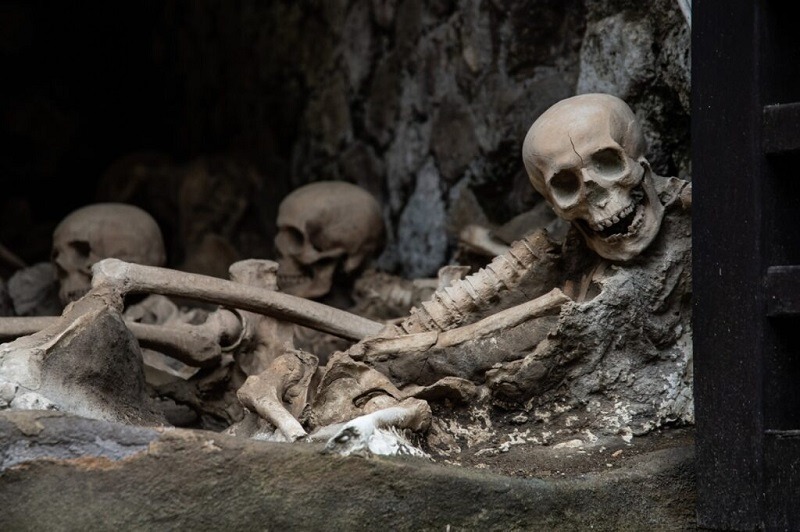
300 bodies were found in the area of the port arches near the ancient beach on December 01, 2021 in Ercolano, Italy.
“The last moments here were instantaneous, but terrible,” Sirano said. “It was 1 a.m. when the pyroclastic surge produced by the volcano reached the town for the first time with a temperature of 300-400 degrees, or even, according to some studies, 500-700 degrees.
A white-hot cloud that raced towards the sea at a speed of 100km [60 miles] per hour, which was so dense that it had no oxygen in it,” he added.
Professor Andrew Wallace-Hadrill, a former director of the Herculaneum Project from Cambridge University, told NBC News that the discovery “helped enormously to understand both the last moments of the site, but also the 100 years running up to it.”
“The power of nature is absolutely awesome and to be under a volcanic eruption is just unimaginably violent,” he told the network. “The site sits there peacefully in the sunshine and it seems so idyllic, and you have to explain to people that this has been through the most violent eruption.”
The expert said the man’s feet had been chopped off during a previous excavation.
“Initially they found a couple of leg bones sticking out of the edge of the escarpment. And indeed the excavation through the escarpment had cut off the feet of this skeleton — a bit like finding a mafia 𝓀𝒾𝓁𝓁ing,” Wallace-Hadrill quipped.
In October, Italian Culture Minister Dario Franceschini said: “The sensational discovery of the remains of a fugitive at the archaeological site of Herculaneum is great news, first of all, because the find is due to the resumption in this place, after almost 30 years, of scientific excavations conducted by the ministry’s technical staff.”
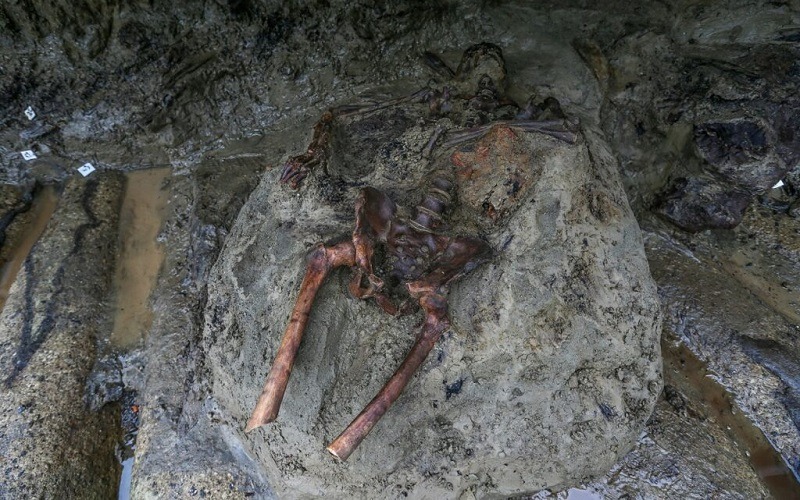
Herculaneum was buried under some 50 feet of ash until it was rediscovered during the digging of a well in the early 18th century, according to the Guardian. Previous excavations in the 1980s and the 1990s exposed more than 300 skeletons at the site.
Scientists said earlier this year that one skeleton likely belonged to a Roman soldier sent on a doomed rescue mission to Pompeii and Herculaneum.
“You feel that you are in immediate contact with ancient life, not the blurred contact you get from typical archaeological sites. Because the process of destruction is 24 hours, you have this extraordinary immediacy,” Wallace-Hadrill told NBC News.
“The wise ones, one realizes in retrospect, simply walked away from the eruption the moment it started,” Wallace-Hadrill said. “If they’d all known this, they all could have escaped, they just had to walk away… But hundreds and thousands did not.”





